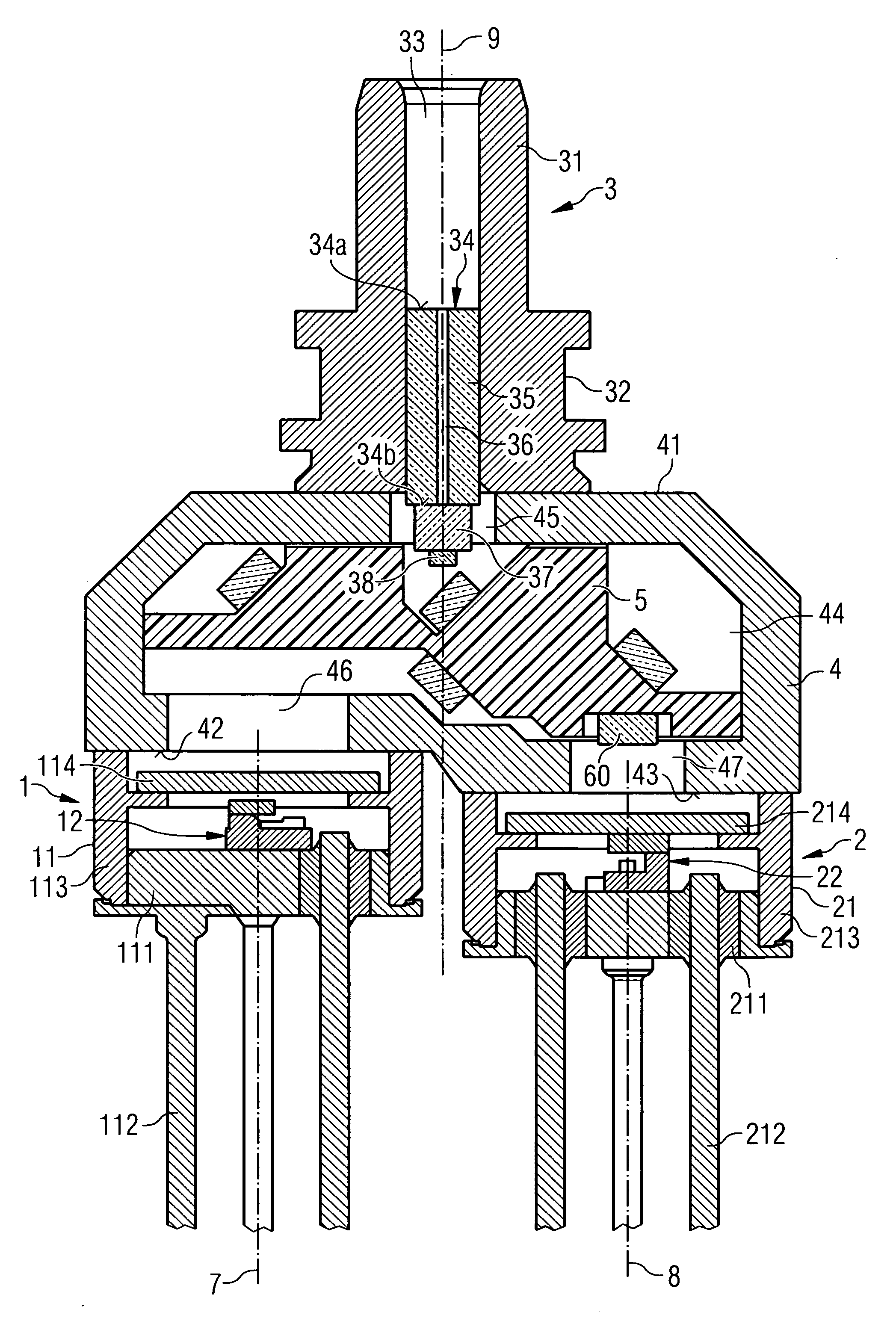Optoelectronic module
- Summary
- Abstract
- Description
- Claims
- Application Information
AI Technical Summary
Benefits of technology
Problems solved by technology
Method used
Image
Examples
Embodiment Construction
[0040] The optoelectronic device for bidirectional data transfer as illustrated in FIGS. 1 to 6 has, as essential components, a transmitting module 1, a receiving module 2, a coupling device 3—also referred to as receptacle—for coupling an optical waveguide, a housing 4 and a beam splitting device 5.
[0041] The transmitting module 1 and the receiving module 2 are in each case formed in a TO design. A TO46 design is preferably used. The transmitting module 1 comprises a TO housing 11 and a transmitting assembly 12. The TO housing has a TO baseplate 111 (also referred to as TO header), into which housing pins 112 for electrically linking the module are introduced, and a metallic cap 113 with a glazed window 114. In this case, the metallic cap 113 is not a standard cap: it has a weldable area at its end facing the housing 4. The 113 is welded onto the baseplate 111.
[0042] As can also be seen from FIG. 2 (which is laterally reversed with respect to FIG. 1), the transmitting assembly 12...
PUM
 Login to View More
Login to View More Abstract
Description
Claims
Application Information
 Login to View More
Login to View More - R&D
- Intellectual Property
- Life Sciences
- Materials
- Tech Scout
- Unparalleled Data Quality
- Higher Quality Content
- 60% Fewer Hallucinations
Browse by: Latest US Patents, China's latest patents, Technical Efficacy Thesaurus, Application Domain, Technology Topic, Popular Technical Reports.
© 2025 PatSnap. All rights reserved.Legal|Privacy policy|Modern Slavery Act Transparency Statement|Sitemap|About US| Contact US: help@patsnap.com



